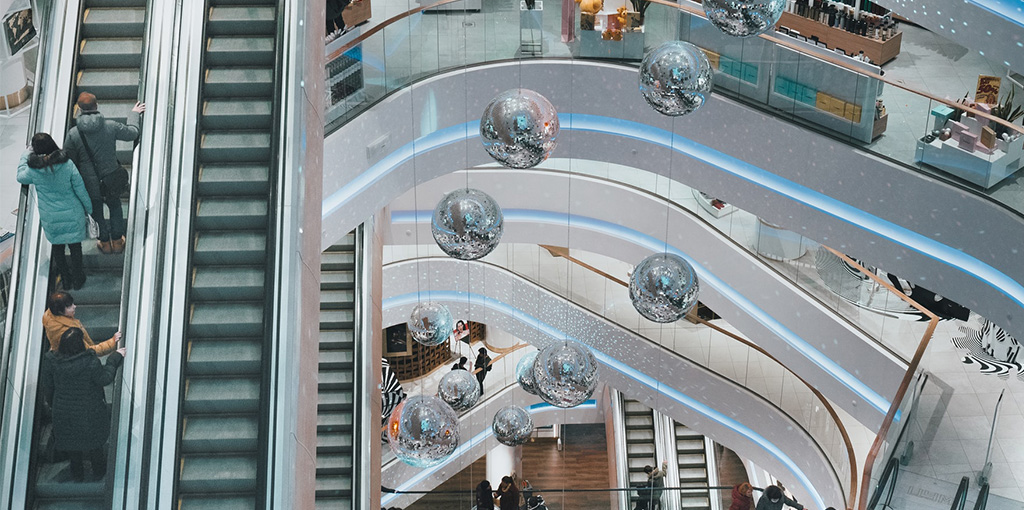All sectors have been affected by the Covid-19 virus in various ways. Shopping malls and the retail sector are also among those affected by the pandemic. When shopping malls stayed closed for long period of time and re-opened by strict rules, this opens a new debate. Was it really the end of shopping malls? In such a period, where online shopping was growing so fast, it was obvious for lots of us that this was the end of the game for shopping malls! But is it really the case?
From public perspective, on one hand, there were a quite considerable number of people who met first time online shopping and enjoy the experience; on the other hand, there were people who missed good old days of spending hours in shopping malls. During this time, thanks to vaccination, lockdown slowdown in several countries and shopping malls starts to re-open with some new rules and regulations. For some shoppers, shopping malls have created a “safer shopping" perception by complying with health measures (Temperature measurement with thermal cameras, Code query etc. apps, compliance with hygiene rules, not receiving customers over the determined capacity, social distancing, etc.). On the other hand, for another part, especially for elder ones, online shopping was not embraced at all since it was still not trustworthy.
From shopping mall developers’ perspective, there was a common sense in contrary to public voice. For them this was an opportunity moment, since digital transformation and online shopping was challenging the business already. Several malls benefit from the process to shift their management strategies and may others on the way. When we regularly follow the websites and social media data of shopping malls, the messages given by shopping malls justifies that shopping malls adapt to the Covid process with different alternatives and gain new functions. But how?
- By turning into Delivery and Logistics areas with Online Businesses
- Leading strong loyalty campaigns (Loyalty applications, discount coupons, etc.)
- Adopting new technologies faster, creating more hygiene-oriented and contactless shopping environment by complying with Covid measures. (Cashierless “check-out” application to avoid congestion in the cash registers, The “curbside pickup” application that allows online ordering customers to pick up their orders in front of the store or from the parking lot of the shopping centre without entering the store)
- Attracting new type of tenants such as Showroom, Education Centre, Health Centre, Rental Office, Entertainment area.
In our study we focus on the analysis of the categories of tenants (Gastronomy, Fashion, Health & Beauty) and occupancy rate after the COVID-19 pandemic for shopping malls larger than 30k GLA in Singapore, Hong Kong and Istanbul to have a global perspective in metropolitan cities for different countries.
20 shopping malls are analysed in each city Hong Kong , Istanbul and Singapore in first half of the 2021. The top malls are selected based on their popularity and size.
With the new era and new strategies after COVID-19, branch & tenant mix plays a very critical role as the shopping malls will be reshaped by fulling this vacancy.
When we analyse Tenant Mixes of top malls (All are greater than 30k square meters);

Occupancy Ratio in 2021 H1
One of the highlight of these Top Malls is the significant large vacant spaces. Given these malls are some of the top malls, it is examined that vacant areas cover 10%-15% of the shopping malls which is very critical. This stills show as shopping centres in evolution.

Fashion, Gastronomy, Health & Beauty Category ratios in 2021 H1
Fashion stores have the largest area among shopping malls. Fashion stores occupies half of Istanbul Shopping Malls and one-third for Hong Kong and Singapore. We will continue to examine how the fashion category will be changed in the branch & tenant mix of the shopping malls in the near future.
There is a trend that Gastronomy will grow its space. While Gastronomy fields are at 20% in Singapore and Hong Kong, they are at 9% in Istanbul.


Health & Beauty areas are also in the categories that tend to grow in shopping malls.
Following tenant mix, demographic data and catchment areas has become more important tool than before for shopping malls. As retailers, mall management companies and commercial real estate developers would reposition their assets accordingly by analysing their existing and potential customers’ profile, competition and their offer.
Although the vacancy ratio has been increased after the COVID-19 pandemic in the shopping malls, it is believed that shopping malls will be reshaped and will become a new destination by creating a multi-purpose environment that offers different functions like coworking offices, data centres, health facilities and cultural amenities, etc. which has been already started.
We will closely continue to follow-up impact of the COVID-19 pandemic on the landscape of the shopping malls.





